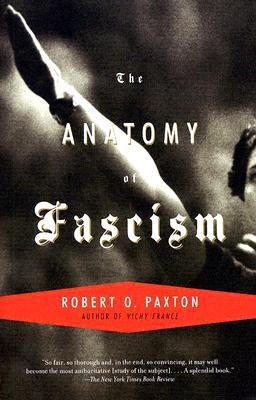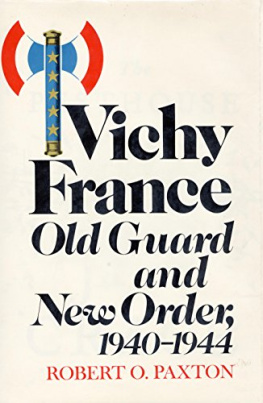Robert O. Paxton - Anatomy of Fascism
Here you can read online Robert O. Paxton - Anatomy of Fascism full text of the book (entire story) in english for free. Download pdf and epub, get meaning, cover and reviews about this ebook. publisher: Vintage Books, Random House, Inc., genre: Politics. Description of the work, (preface) as well as reviews are available. Best literature library LitArk.com created for fans of good reading and offers a wide selection of genres:
Romance novel
Science fiction
Adventure
Detective
Science
History
Home and family
Prose
Art
Politics
Computer
Non-fiction
Religion
Business
Children
Humor
Choose a favorite category and find really read worthwhile books. Enjoy immersion in the world of imagination, feel the emotions of the characters or learn something new for yourself, make an fascinating discovery.

- Book:Anatomy of Fascism
- Author:
- Publisher:Vintage Books, Random House, Inc.
- Genre:
- Rating:3 / 5
- Favourites:Add to favourites
- Your mark:
- 60
- 1
- 2
- 3
- 4
- 5
Anatomy of Fascism : summary, description and annotation
We offer to read an annotation, description, summary or preface (depends on what the author of the book "Anatomy of Fascism " wrote himself). If you haven't found the necessary information about the book — write in the comments, we will try to find it.
Anatomy of Fascism — read online for free the complete book (whole text) full work
Below is the text of the book, divided by pages. System saving the place of the last page read, allows you to conveniently read the book "Anatomy of Fascism " online for free, without having to search again every time where you left off. Put a bookmark, and you can go to the page where you finished reading at any time.
Font size:
Interval:
Bookmark:
Table of Contents

ROBERT O. PAXTON
THE ANATOMY OF FASCISM
Robert O. Paxton taught at Columbia University. His other books include Vichy France, Vichy France and the Jews (with Michael Marrus), Europe in the Twentieth Century, and French Peasant Fascism. He lives in New York City.
ALSO BY ROBERT O. PAXTON
French Peasant Fascism
Europe in the Twentieth Century
Vichy France: Old Guard and New Order, 19401944
Parades and Politics at Vichy
Vichy France and the Jews (with Michael R. Marrus)
To Sarah
PREFACE
For many years I taught a university course on fascism, sometimes as a graduate seminar, sometimes as an undergraduate seminar. The more I read about fascism and the more I discussed it with students, the more perplexed I grew. While an abundance of brilliant monographs dealt illuminatingly with particular aspects of Mussolinis Italy, Hitlers Germany, and their like, books about fascism as a generic phenomenon often seemed to me, in comparison with the monographs, abstract, stereotyped, and bloodless.
This book is an attempt to draw the monographic literature more closely into a discussion of fascism in general, and to present fascism in a way that takes into account its variations and complexity. It seeks to find out how fascism worked. That is why it focuses more closely on the actions of fascists than on their words, contrary to usual practice. It also spends more time than usual on the allies and accomplices of fascism, and on the ways fascist regimes interacted with the larger societies they sought to transform.
This is an essay, not an encyclopedia. Many readers may find their favorite subject treated here more cursorily than they would like. I hope that what I have written will tempt them to read further. That is the purpose of the endnotes and the extensive critical bibliographical essay.
Having worked on this subject off and on for many years, I have incurred more than the usual number of intellectual and personal debts. The Rockefeller Foundation enabled me to rough out the chapters at the Villa Serbelloni, just across Lake Como from where Partisans killed Mussolini in April 1945. The cole des Hautes tudes en Sciences Sociales in Paris, the Istituto Universitario Europeo in Florence, and a number of American universities let me try out some of these ideas in the seminar room and lecture hall. A generation of Columbia students challenged my interpretations.
Philippe Burrin, Paul Corner, Patrizia Dogliani, and Henry Ashby Turner, Jr., generously reviewed an earlier version of this work. Carol Gluck, Herbert S. Klein, and Ken Ruoff read portions of the manuscript. All saved me from embarrassing errors, and I accepted most of their suggestions. If I had accepted them all, this would probably be a better book. I am also grateful for various kinds of help to Drue Heinz, Stuart J. Woolf, Stuart Proffitt, Bruce Lawder, Carlo Moos, Fred Wakeman, Jeffrey Bale, Joel Colton, Stanley Hoffmann, Juan Linz, and the reference staff of the Columbia University libraries. The errors that remain are the fault of the author alone.
Above all, Sarah Plimpton was steadfast in encouragement and wise and discerning as a critical reader.
New York, February 2003
CHAPTER 1
Introduction
Fascism was the major political innovation of the twentieth century, and the source of much of its pain. The other major currents of modern Western political cultureconservatism, liberalism, socialismall reached mature form between the late eighteenth century and the mid-nineteenth century. Fascism, however, was still unimagined as late as the 1890s. Friedrich Engels, writing a preface in 1895 for his new edition of Karl Marxs TheClass Struggles in France, clearly believed that wider suffrage would inexorably deliver more votes to the Left. Both time and numbers, Engels was certain, were on the socialists side. If it [the growing socialist vote] continues in this fashion, by the end of this [nineteenth] century we [socialists] shall conquer the major part of the middle strata of society, petty bourgeois and peasants, and grow into the decisive power in the land." Conservatives, Engels wrote, had noticed that legality was working against them. By contrast, we [socialists], under this legality, get firm muscles and rosy cheeks and look like life eternal. There is nothing for them [the conservatives] to do but break through this legality themselves." 1 While Engels thus expected that the Lefts enemies would launch a preemptive attack, he could not imagine in 1895 that this might win mass approval. Dictatorship against the Left amidst popular enthusiasm that was the unexpected combination that fascism would manage to put together one short generation later.
There were only a few glimmers of premonition. One came from an inquisitive young French aristocrat, Alexis de Tocqueville. Although Tocqueville found much to admire on his visit to the United States in 1831, he was troubled by the majoritys power in a democracy to impose conformity by social pressure, in the absence of an independent social elite.
The kind of oppression with which democratic peoples are threatened will resemble nothing that had preceded it in the world; our contemporaries would not find its image in their memories. I myself seek in vain an expression that exactly reproduces the idea that I form of it for myself and that contains it; the old words despotism and tyranny are not suitable. The thing is new, therefore I must try to define it, since I can not name it.2
Another premonition came at the eleventh hour from a French engineer turned social commentator, Georges Sorel. In 1908 Sorel criticized Marx for failing to notice that a revolution accomplished in times of decadence" could take a return to the past or even social conservation as its ideal."3
The word fascism4 has its root in the Italian fascio, literally a bundle or sheaf. More remotely, the word recalled the Latin fasces, an axe encased in a bundle of rods that was carried before the magistrates in Roman public processions to signify the authority and unity of the state. Before 1914, the symbolism of the Roman fasces was usually appropriated by the Left. Marianne, symbol of the French Republic, was often portrayed in the nineteenth century carrying the fasces to represent the force of Republican solidarity against her aristocratic and clerical enemies.5Fasces are prominently displayed on Christopher Wrens Sheldonian Theater (166469) at Oxford University. They appeared on the Lincoln Memorial in Washington (1922) and on the United States quarter minted in 1932.6
Italian revolutionaries used the term fascio in the late nineteenth century to evoke the solidarity of committed militants. The peasants who rose against their landlords in Sicily in 189394 called themselves the Fasci Siciliani. When in late 1914 a group of left-wing nationalists, soon joined by the socialist outcast Benito Mussolini,7 sought to bring Italy into World War I on the Allied side, they chose a name designed to communicate both the fervor and the solidarity of their campaign: the Fascio Rivoluzionario dAzione Interventista (Revolutionary League for Interventionist Action).8 At the end of World War I, Mussolini coined the term fascismo to describe the mood of the little band of nationalist ex-soldiers and pro-war syndicalist9 revolutionaries that he was gathering around himself. Even then, he had no monopoly on the word fascio, which remained in general use for activist groups of various political hues.10
Next pageFont size:
Interval:
Bookmark:
Similar books «Anatomy of Fascism »
Look at similar books to Anatomy of Fascism . We have selected literature similar in name and meaning in the hope of providing readers with more options to find new, interesting, not yet read works.
Discussion, reviews of the book Anatomy of Fascism and just readers' own opinions. Leave your comments, write what you think about the work, its meaning or the main characters. Specify what exactly you liked and what you didn't like, and why you think so.









